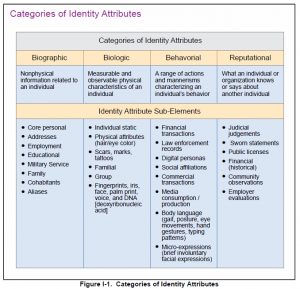The Situation Report: Pentagon Evolves Identity Management

(Image: Shutterstock)
You use a fingerprint to access your smartphone, an access card to enter your place of work, and the last four digits of your Social Security number to verify you are who you say you are. But can any of these things really determine your identity?
Not really, according to a new Defense Department guidance document. Many of you have heard of “joint operations,” “information operations,” and “intelligence collection activities” when it comes to the world of defense and national security. Well, let me introduce you to the Pentagon’s latest buzz phrase–Identity Activities.
“Identity is the summary (or sum total) of multiple aspects of an entity’s characteristics, attributes, activities, reputation, knowledge, and judgments–all of which are constantly evolving,” according to the new guidance. “Identity is the sum of gathered descriptors and assertions and not simply a physical or current manifestation of limited attributes.”
 What does all of this psychobabble really mean? Well, it means the Pentagon wants to employ data analysis tools that will leverage biographical, biological, behavioral, and reputational data inputs to help the military determine the identity of a person they encounter on the battlefield and whether that person poses any kind of threat.
What does all of this psychobabble really mean? Well, it means the Pentagon wants to employ data analysis tools that will leverage biographical, biological, behavioral, and reputational data inputs to help the military determine the identity of a person they encounter on the battlefield and whether that person poses any kind of threat.
So what data elements would actually feed such an identity system? Here’s what the Defense Department says:
Biographical: Name, address, passport number, tax records, etc….
Biological: Fingerprints, facial images, iris images, DNA, etc….
Behavioral: Cellphone records, social media, travel patterns, etc….
Reputational: Statements attesting or vouching for character, criminal records, credit scores, security clearances, organizational position, etc….
But that summary is really just the tip of the identity iceberg. According to DoD, “approximately 500 separate data types and subtypes of identity attributes that support relevant national security activities have been identified.”

Second only to the expanded categories and subcategories of identity attributes is the number of databases maintained at the Federal level that are dedicated to one or more methods of tracking identities.
- DOD Automated Biometric Identification System (ABIS).
- National DNA Index System (NDIS) and Joint Federal Agencies Intelligence DNA Database (JFAIDD).
- Biometric Identity Intelligence Resource (BI2R).
- Harmony.
- Detainee Reporting System (DRS).
- FBI’s Next Generation Identification (NGI).
- Department of Homeland Security (DHS) Automated Biometric Identification System (IDENT).
- DHS TECS.
- Terrorist Identities Datamart Environment (TIDE).
